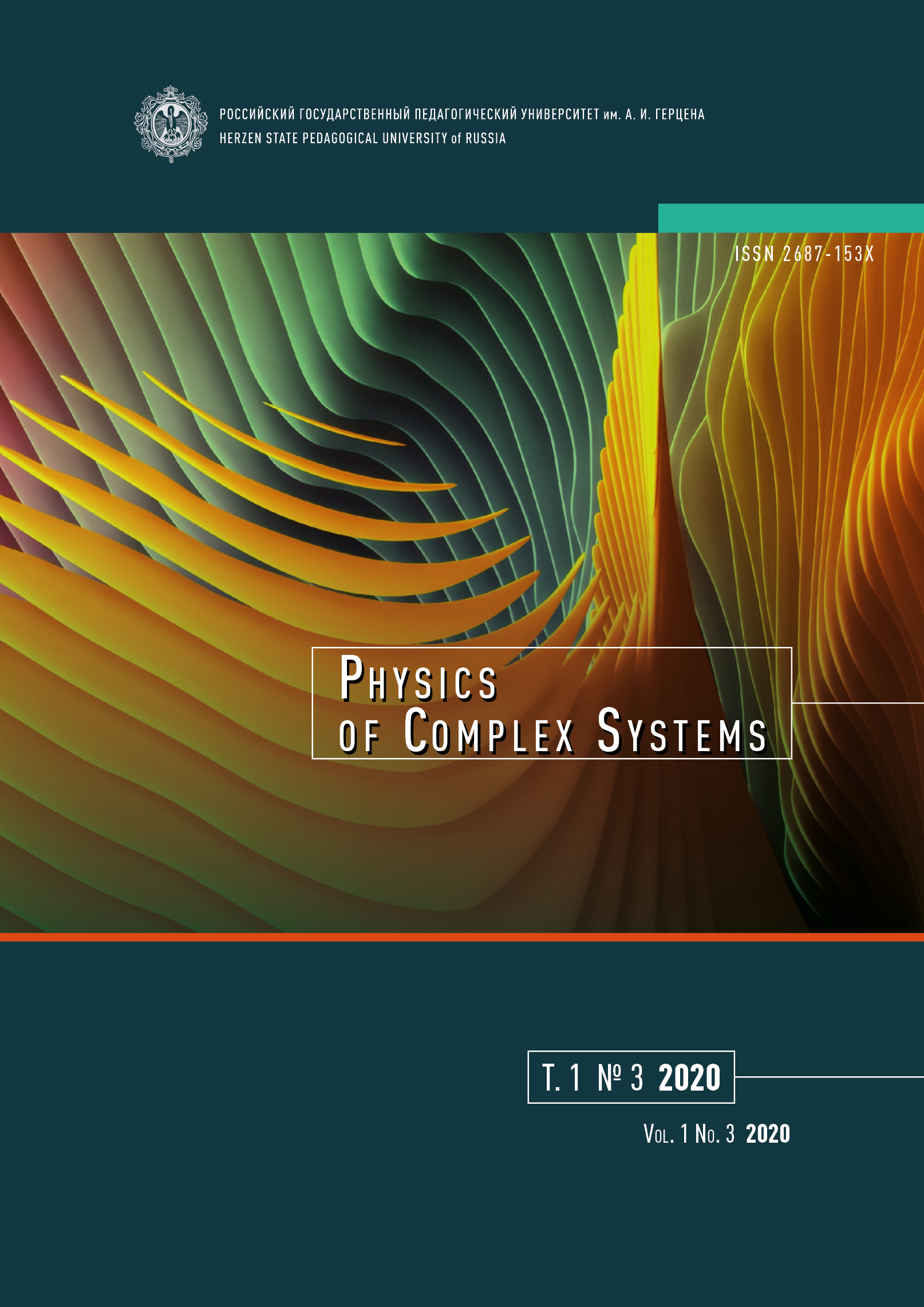Dielectric polarisation in naturally disordered trilead tetroxide Pb3O4
DOI:
https://doi.org/10.33910/2687-153X-2020-1-3-87-92Keywords:
Pb3O4, dielectric polarization, polycrystalline structure, dielectric response, Maxwell–Wagner polarisationAbstract
The paper presents the results of an experimental study of trilead tetraoxide Pb3O4 binder layers and their dielectric properties. The study revealed polarisation processes in low frequency range associated with structure peculiarities in the Pb3O4 compound. The study established the dependence of dielectric properties on temperature and frequency of the applied field. The complex dielectric response of layer samples was measured under various AC drive and DC bias conditions. The paper provides an explanation for the influence of the simultaneous AC and DC voltages on dipole and Maxwell–Wagner polarisation in Pb3O4. It is assumed that there is an impact of interfacial barriers in the polycrystalline structure. The paper discusses the role of lone pair (LP) electrons Pb2+ in polarisation properties of trilead tetraoxide compound.
References
Avanesyan, V. T. (1999) Polyarizatsionnye yavleniya v estestvenno-neuporyadochennykh poluprovodnikakh s odinochnoj elektronnoj paroj [Polarization phenomena in naturally disordered semiconductors with a single electron pair]. PhD dissertation (Physics). Saint Petersburg, Herzen State Pedagogical University of Russia, 258 p. (In Russian)
Avanesyan, V. T., Bordovskii, V. A., Potachov, S. A. (1999) The polarization phenomena in a-PbO photoelectret ceramic. In: A. A. Konsta, A. Vassilikou-Dova, K. Vartzeli-Nikaki (eds.). Proceedings of 10th International Symposium on electrets ISE 10. 22–24 September, 1999, European Cultural Centre of Delphi, Greece. S. p.: IEEE, pp. 193–196. (In English)
Avanesyan, V. T., Bordovskii, V. A., Potachev, S. A. (2002) Dielectric characterization of the lone pair oxide structure. Journal of Non-Crystalline Solids, 305 (1–3), 136–139. DOI: 10.1016/S0022-3093(02)01090-6 (In English)
Galy, J., Meunier, G., Andersson, S., Åström, A. (1975) Stéréochimie des eléments comportant des paires non liées: Ge (II), As (III), Se (IV), Br (V), Sn (II), Sb (III), Te (IV), I (V), Xe (VI), Tl (I), Pb (II), et Bi (III) (oxydes, fluorures et oxyfluorures). Journal of Solid State Chemistry, 13 (1–2), 142–159. DOI: 10.1016/0022-4596(81)90157-2 (In French)
Jonscher, A. K. (1996) Universal relaxation law. London: Chelsea Dielectric Press, 415 p. (In English)
Rapos, M., Calderwood, J. H. (1974) Dielectric properties of MoO3 under the simultaneous action of AC and DC voltages. Journal of Physics D: Applied Physics, 7 (13), article 1838. DOI: 10.1088/0022-3727/7/13/309 (In English)
Robertson, J., Warren, W. L., Tuttle, B. A., Dimos, D., Smyth, D. M. (1993) Shallow Pb3+ hole traps in lead zirconate titanate ferroelectrics. Applied Physics Letters, 63 (11), 1519–1521. DOI: 10.1063/1.110761 (In English)
Sessler, G. M. (ed.). (1987) Electrets. Vol. 33. Berlin; Heidelberg; New York: Springer Publ., 453 p. DOI: 10.1007/3-540-17335-8 (In English)
Downloads
Published
Issue
Section
License
Copyright (c) 2020 Vachagan T. Avanesyan, Ekaterina P. Baranova, Ksenia A. Chursina

This work is licensed under a Creative Commons Attribution-NonCommercial 4.0 International License.
The work is provided under the terms of the Public Offer and of Creative Commons public license Creative Commons Attribution 4.0 International (CC BY 4.0).
This license permits an unlimited number of users to copy and redistribute the material in any medium or format, and to remix, transform, and build upon the material for any purpose, including commercial use.
This license retains copyright for the authors but allows others to freely distribute, use, and adapt the work, on the mandatory condition that appropriate credit is given. Users must provide a correct link to the original publication in our journal, cite the authors' names, and indicate if any changes were made.
Copyright remains with the authors. The CC BY 4.0 license does not transfer rights to third parties but rather grants users prior permission for use, provided the attribution condition is met. Any use of the work will be governed by the terms of this license.







